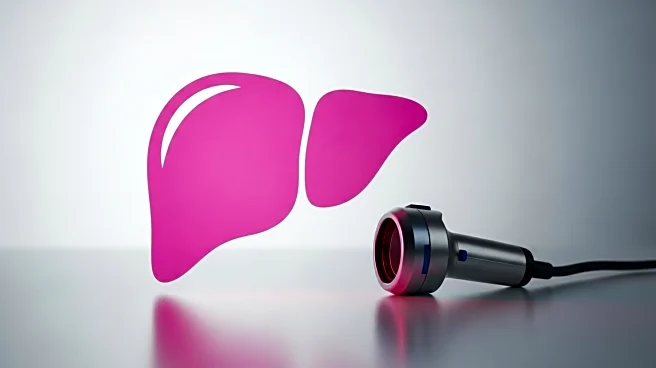What is the story about?
What's Happening?
The Nonalcoholic Steatohepatitis (NASH) Therapeutics and Diagnostics Market is experiencing significant growth due to the increasing prevalence of lifestyle-related liver disorders. NASH, a severe form of nonalcoholic fatty liver disease, is linked to obesity, type 2 diabetes, and metabolic syndrome, presenting a substantial unmet medical need. Currently, there are no FDA-approved therapies for NASH, prompting pharmaceutical and biotech companies to pursue innovative drug candidates. The market is expected to expand rapidly, driven by advancements in non-invasive diagnostic technologies and increased disease awareness. North America leads the market due to advanced healthcare systems and high obesity rates, while Europe and Asia-Pacific are also witnessing growth.
Why It's Important?
The growth of the NASH market is crucial as it addresses a significant unmet medical need in liver disease treatment. With a large portion of the global population affected by NAFLD and a substantial percentage progressing to NASH, the development of effective therapies and diagnostics is vital. The market's expansion could lead to the first FDA-approved NASH drug by 2025-2026, unlocking significant revenue potential and transforming patient care. Additionally, advancements in non-invasive diagnostics could improve early detection and management of NASH, reducing liver-related morbidity and mortality.
What's Next?
The NASH market is expected to continue its growth trajectory, with several promising drug candidates in late-stage clinical trials. Companies like Madrigal Pharmaceuticals and Novo Nordisk are making significant progress, with potential FDA approvals on the horizon. The diagnostic segment is also set to expand, supported by the adoption of non-invasive technologies. Stakeholders are likely to focus on precision medicine and biomarker development, while drug-diagnostic partnerships could provide integrated patient solutions. Government and NGO initiatives promoting liver health awareness may further support market growth.
Beyond the Headlines
The absence of approved therapeutics for NASH creates uncertainty in treatment strategies, highlighting the need for better diagnostic accuracy. High clinical trial failure rates pose challenges, but the focus on precision medicine and biomarker development offers opportunities for innovation. The competitive landscape is dynamic, with global pharmaceutical leaders and emerging biotech firms racing to develop the first approved therapy. The integration of AI-based diagnostic tools could revolutionize disease management, offering accurate predictions of disease progression.
AI Generated Content
Do you find this article useful?
















